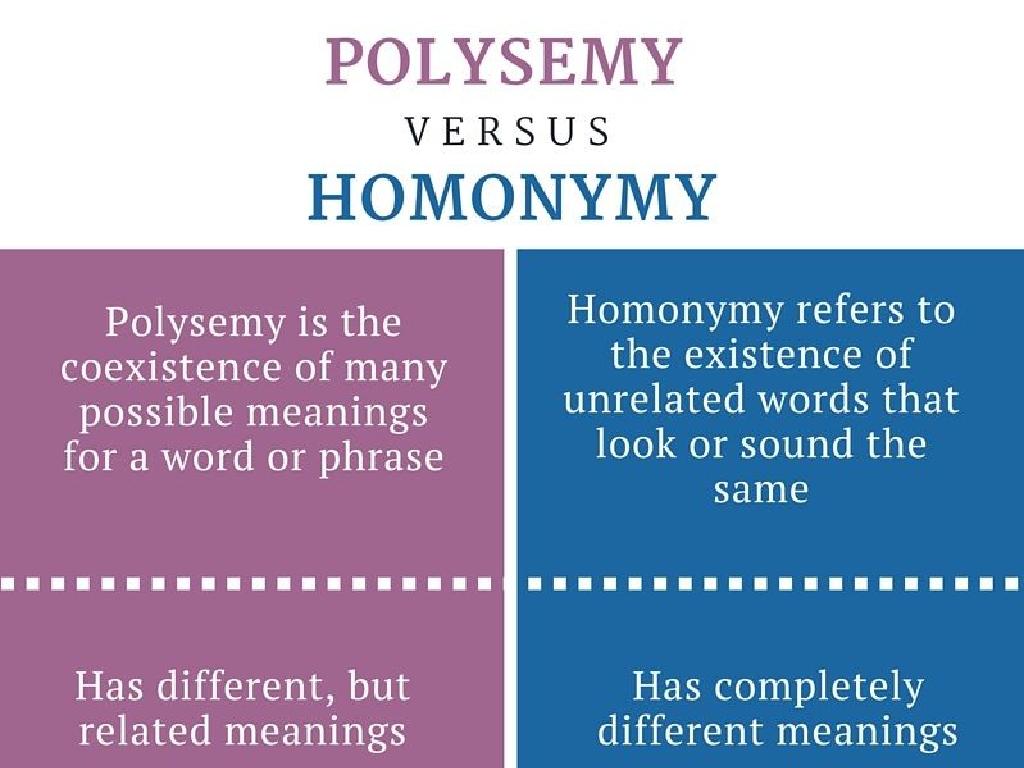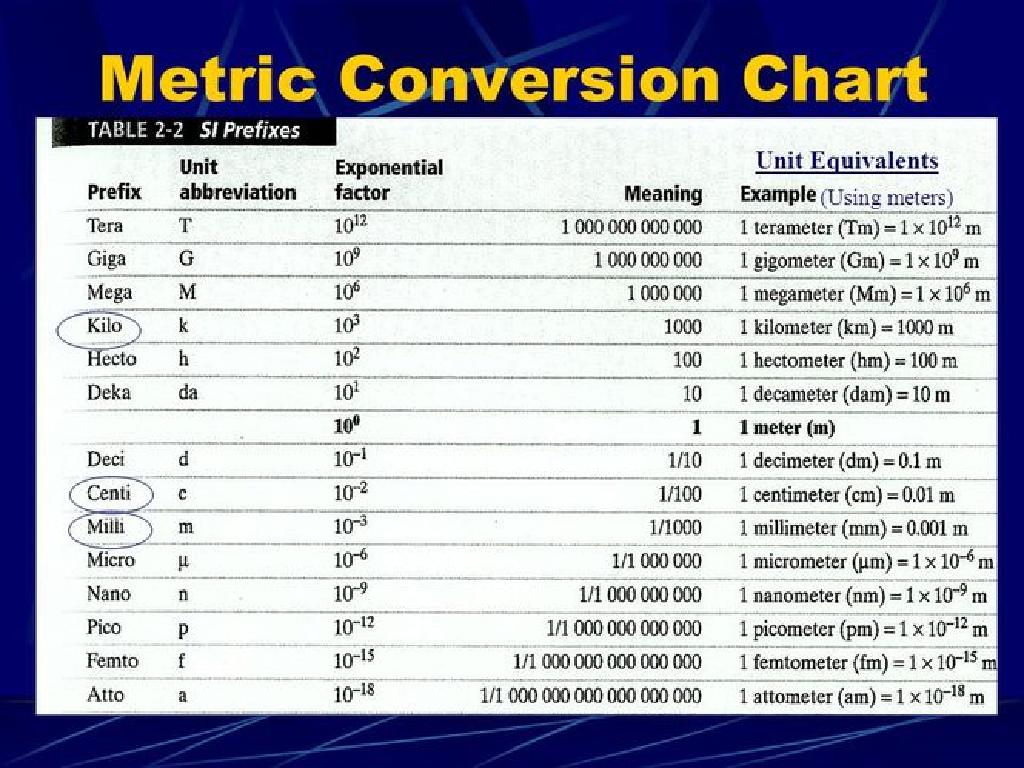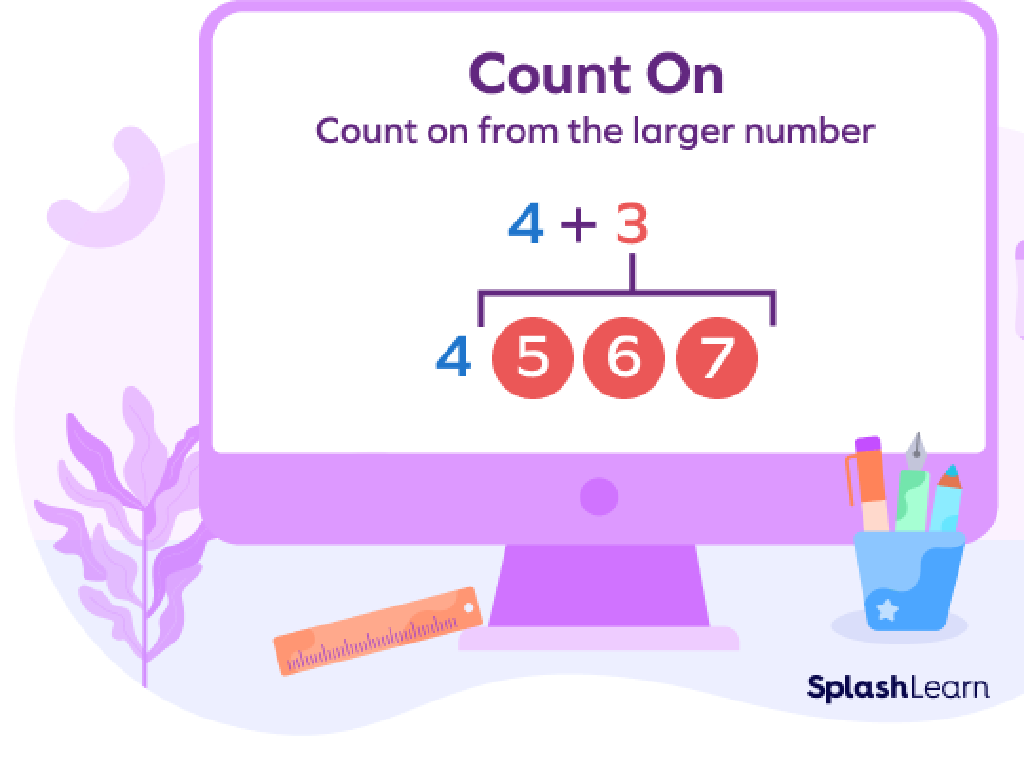Match Fractions To Models: Halves, Thirds, And Fourths
Subject: Math
Grade: Third grade
Topic: Understand Fractions
Please LOG IN to download the presentation. Access is available to registered users only.
View More Content
Welcome to Fractions!
– Learning about fractions
– Exploring halves, thirds, fourths
– Halves split things into 2 parts, thirds into 3, fourths into 4
– Fractions represent parts
– Like a pizza cut into pieces, each piece is a fraction of the pizza
– Visualizing fractions with models
– Use shapes or objects to see fractions
|
This slide introduces the concept of fractions to third-grade students. Begin by explaining that fractions are a way to represent parts of a whole, similar to how a pizza can be cut into pieces. Each piece of the pizza is a fraction of the whole pizza. Emphasize the terms halves, thirds, and fourths by showing visual models such as circles (pizzas) or rectangles (chocolate bars) divided into equal parts. Encourage students to think of fractions as divisions of any object or quantity. Use real-life examples and visual aids to help students grasp the concept. The goal is for students to understand that fractions are not just numbers, but representations of real-world parts.
Understanding Fractions: Halves, Thirds, and Fourths
– A fraction shows part of a whole
– Like a slice of pizza is a part of a whole pizza
– Consists of numerator and denominator
– Numerator is how many parts you have
– Numerator: top number of a fraction
– Denominator tells how many equal parts the whole is divided into
– Denominator: bottom number
|
Begin by explaining that a fraction represents a part of a whole, similar to a slice of pizza being a part of an entire pizza. The numerator, which is the top number, indicates how many parts we are considering, while the denominator, the bottom number, shows into how many equal parts the whole is divided. Emphasize that in fractions like halves, thirds, and fourths, the denominator is 2, 3, and 4 respectively, representing the total number of equal parts. Use visual aids like pie charts or bar models to illustrate fractions as parts of a whole. Encourage students to think of everyday examples where they encounter parts of a whole, such as cutting an apple into halves or sharing a chocolate bar in fourths.
Understanding Halves
– Splitting into 2 equal parts
– Each part is one half
– When you divide something into two same-sized pieces, each piece is a half.
– Written as 1/2
– Example: Half a sandwich
– Imagine cutting your favorite sandwich down the middle and getting two equal pieces.
|
This slide introduces the concept of halves to third-grade students. Begin by explaining that when an object is divided into two equal parts, each part is called a half. Emphasize the idea of ‘equal parts’ to ensure students understand that both halves must be the same size. Show them that each half is represented by the fraction 1/2. Use tangible examples like cutting a sandwich, an apple, or a piece of paper to illustrate the concept. Encourage students to think of other items that can be divided into halves. This will help them visualize and better grasp the idea of fractions representing parts of a whole.
Understanding Thirds in Fractions
– Dividing into 3 equal parts
– Imagine cutting a cake into 3 same-size pieces.
– Each part is one third (1/3)
– When you take one piece, that’s 1 out of 3, or 1/3.
– Example: Pizza cut into thirds
– If a pizza is cut into 3 slices, each slice is 1/3 of the whole pizza.
– Writing and recognizing 1/3
|
This slide introduces the concept of thirds in fractions. Start by explaining that when an object is cut into three equal parts, each part is called one third and is represented by the fraction 1/3. Use a visual example, such as a pizza, to help students visualize the concept. Show them how to write the fraction for one third and help them recognize it in different contexts. Reinforce the idea that all parts must be equal to be considered thirds. You can bring in a real pizza or a paper model to demonstrate this concept in a tangible way.
Understanding Fourths
– Dividing into 4 equal parts
– Each part is one fourth
– Imagine cutting an object into 4 same-size pieces
– Written as 1/4
– 1/4 represents one out of four equal sections
– Example: A cake in fourths
– Visualize dividing a cake into 4 equal slices
|
This slide introduces the concept of ‘fourths’ to third-grade students. Begin by explaining that when an object is cut into four equal parts, each part is called a ‘fourth.’ Emphasize the importance of the parts being equal. Show how each fourth is represented in fraction form as 1/4. Use a common example, such as dividing a cake into four equal slices, to help students visualize the concept. Encourage students to think of other items that can be divided into fourths and to draw their own representations of 1/4. This will help solidify their understanding of fractions as parts of a whole.
Matching Fractions to Models
– Understanding fractions with models
– Models like pie charts help us see fractions
– Using shapes to show fractions
– Circles and rectangles can be divided into equal parts
– Visualizing parts of a whole
– Each part of a shape represents a fraction of the whole
– Practice matching fractions
– Find the right fraction for each divided shape
|
This slide introduces students to the concept of fractions using visual models such as circles and rectangles. By dividing these shapes into equal parts, we can illustrate halves, thirds, and fourths, making it easier for students to grasp how fractions represent parts of a whole. Encourage students to think of a pizza or a chocolate bar being shared equally. The activity will involve matching divided shapes to written fractions, reinforcing their understanding through visualization. Prepare several examples of shapes divided into different fractions and have students practice by drawing lines to match them to the correct fraction. This hands-on activity will help solidify their comprehension of fractions as parts of a whole.
Activity Time: Fraction Match-Up
– Receive your fraction cards
– Look at the fraction models provided
– Models show halves, thirds, fourths
– Match each card to its model
– Find the model that shows the same fraction as your card
– Discuss matches with classmates
|
This class activity is designed to help students visually understand and match fractions to their corresponding models. Distribute fraction cards and models of halves, thirds, and fourths to the students. Their task is to correctly match each fraction card to the model that represents the same fraction. After matching, students should discuss their matches with classmates to reinforce their understanding. Possible activities include: 1) Matching cards to models in groups, 2) Creating their own fraction models with paper, 3) Drawing models to match to fraction cards, 4) Using real-life objects to create fraction models, 5) Playing a memory game where they find pairs of matching cards and models.
Fraction Review: Halves, Thirds, and Fourths
– Reviewing fraction concepts
– Understanding halves, thirds, fourths
– A half is 1/2, a third is 1/3, and a fourth is 1/4 of a whole
– Class participation: Explain fractions
– Students explain what they’ve learned in their own words
– Open floor for questions
|
This slide is aimed at reviewing the day’s lesson on fractions. Start by recapping the key points about fractions, emphasizing the parts of a whole concept. Ask the class to volunteer explanations for what a half, a third, and a fourth represent, encouraging them to use real-life examples or visual aids like pie charts or divided objects. This interactive approach helps assess their understanding. Finally, open the floor for any questions, ensuring that students feel comfortable with the material before moving on. Address any misconceptions and provide additional examples if necessary.
Homework: Practice Fractions with Models
– Complete the fraction worksheet
– Focus on halves, thirds, and fourths
– Models include pie charts, bars, and shapes divided into equal parts
– Bring questions to the next class
– Practice makes perfect!
– The more you practice, the better you’ll understand fractions!
|
This homework assignment is designed to reinforce the concepts taught in class about matching fractions to visual models. The worksheet will have various exercises where students will identify halves, thirds, and fourths using different models such as pie charts, bar divisions, and shapes. Encourage students to attempt all questions and remind them that it’s okay to have questions; they should bring any difficulties they encounter to the next class for clarification. Emphasize the importance of practice in mastering fractions and ensure they understand that making mistakes is part of the learning process. Provide examples of what the models might look like and how to interpret them.





